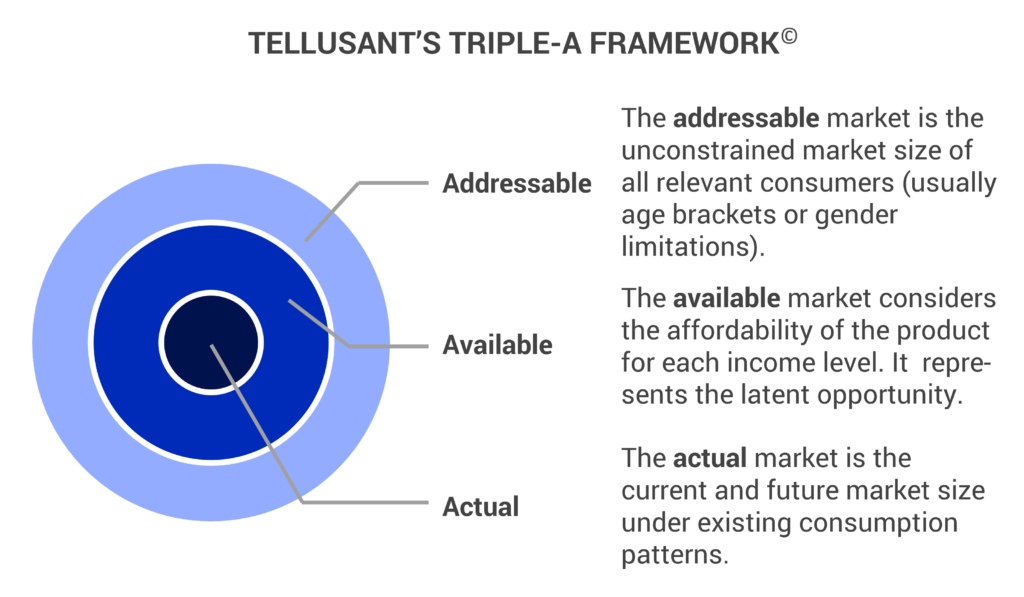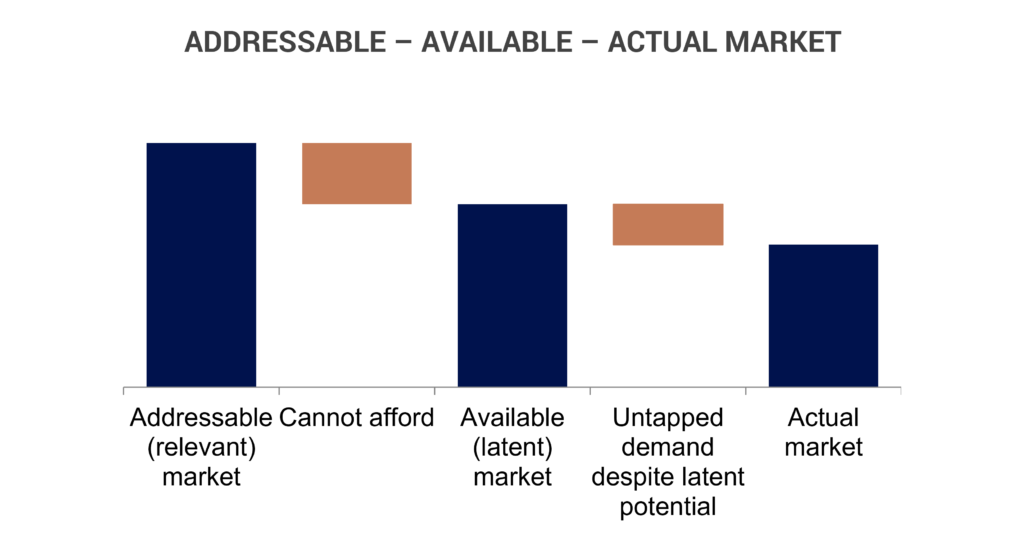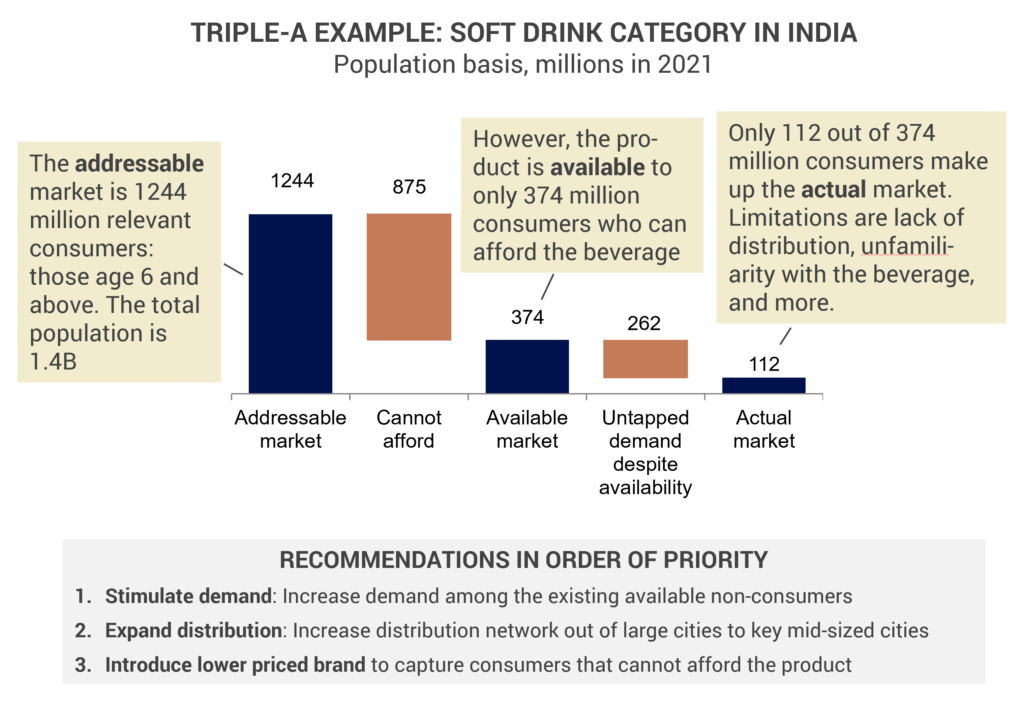The Triple-A Method for Market Sizing
- 2024-12-28
- 5:04 pm
- Posted By: Tellusant

Quantifying market opportunities requires clear definitions that are the same between and within countries. The Addressable – Available – Actual market sizing method provides this. It is a logical way to understand not only current market size, but also the latent market today and in the future.
Triple-A links directly to our PACE (Pricing Aligned with Consumer Economics) product.

The graph above illustrates the concept.
- The addressable market is the unconstrained market size if all relevant consumers had access to the product and were buying it. Relevant consumers are those with suitable demographic profile (age, gender).
- However, low income prohibits some consumers from buying the product. This is quantified by income bracket by country, city or subdivision.This gives the available market. It represents the latent market potential.
- Moreover, the actual market is smaller than the addressable market.This may be because of lack of distribution, consumers being unaware with the category or brand, and other factors quantified with consumer research.
Working through the Triple-A logic gives a waterfall like the graph below. Typically, it is done dynamically covering the next five years.

Below is an example we worked on for a soft drinks category in India. It shows that there is significant opportunity to expand category participation.

- Out of a total population of 1.4 billion, 1,244 million are above age six. This is the addressable market of relevant consumers.
- However, only 875 million of those consumers cannot afford the products in the category. Thus, the available market is 374 million consumers. This is the latent market available to category players.
- Among those consumers, 262 million chose not to consume the product for a number of reasons. Thus, the actual market is 112 million consumers.
If the graph instead showed 2026, there would be even greater opportunities. Such scenarios are central to PACE.
Which were the resulting actions?
In our case, the immediate priority was to convert latent, but not actual consumers. There was no reason for them to buy into the category except of lack of awareness.
The next priority was to expand distribution to tap into the available market. The product was mainly sold in the a dozen of major cities. Tapping into the next level of cities through better distribution coverage showed positive returns in a few years.
Finally, a large part of the addressable market was excluded from the category because of too high price points. Many of those consumers will become middle class soon because of India’s high economic growth. But there was also a significant opportunity to serve consumers not too out of reach from existing price points, with a value brand.
The benefit of Triple-A is that it creates a logical framework for great discussions within management teams. Such discussions are 100% supported by our PACE app.
The meetings will center on screen displays of PACE outputs, not PowerPoint presentations. Countries, cities or subdivisions can be compared immediately. Sensitivity analysis are available in real time.
This makes for fact-based and accurate insights derived much faster than with current, old-fashioned methods, at much lower cost.
See our website's description of PACE, with further details here.